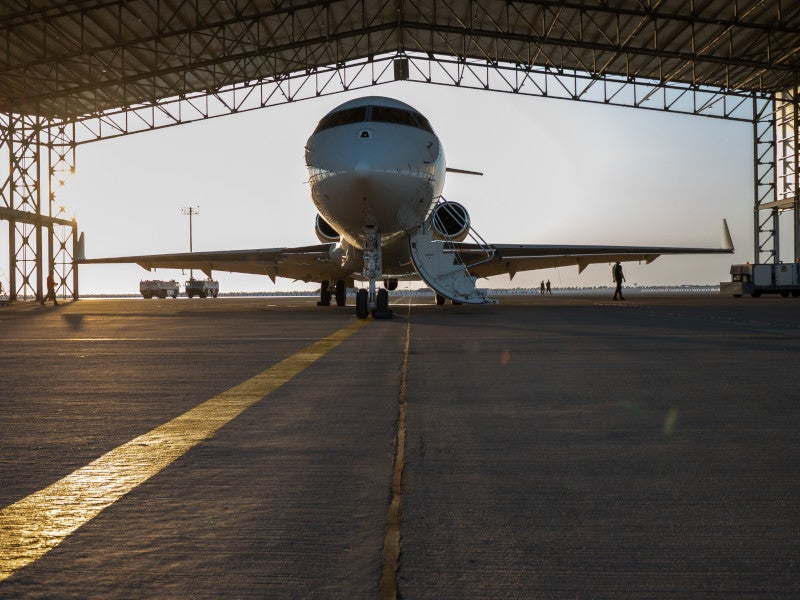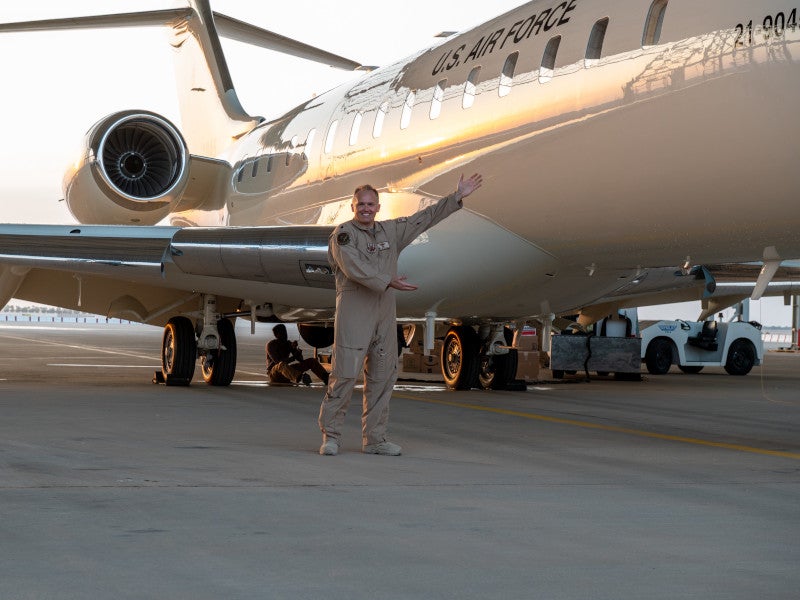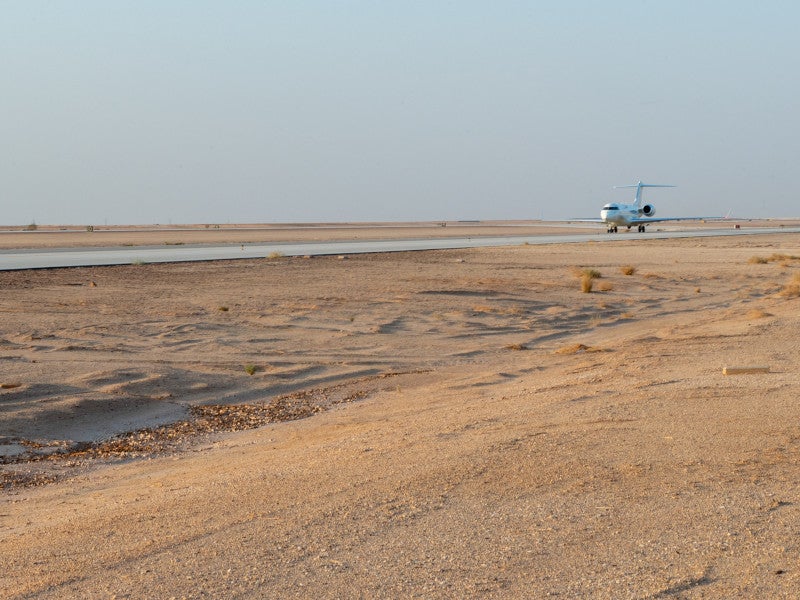The E-11A aircraft is a modified Bombardier Global Express 6000/BD700-1A10 business jet used by the US Air Force (USAF) to support battlefield communications for forward-deployed forces.
It is equipped with battlefield airborne communications node (BACN) payload to provide extended aerial command and control capabilities to aerial assets and ground-based troops.
The aircraft is operated by the USAF’s 430th Expeditionary Electronic Communications Squadron, which is responsible for providing communication coverage to ground and air forces in active combat zones.
A new E-11A BACN squadron is expected to be established at the Robins Air Force Base in Georgia, US, in February 2023.
E-11A Orders and deliveries
The USAF received four Global aircraft from Bombardier for the BACN programme between 2007 and 2021.
Bombardier’s subsidiary Learjet received an indefinite delivery indefinite quantity (IDIQ) contract worth $465m from the USAF to provide up to six Global 6000 aircraft for the BACN programme in June 2021. The contractual scope also includes engineering and modification work. The company has so far received firm orders for three aircraft under the IDIQ contract.
The first mission-configured Global 6000 aircraft under the contract was delivered in September 2022. The USAF procured another modified aircraft, which arrived at the Prince Sultan Air Base, Kingdom of Saudi Arabia, in December 2022.
Northrop Grumman received a contract worth $265m from the USAF to continue providing maintenance and logistics support for four E-11A BACN aircraft in September 2017. The company was previously awarded a five-year maintenance contract, which expired in January 2018.
E-11A BACN aircraft design and features
The E-11A is based on the Global platform, which is modified to accommodate the installation of communications equipment to support the mission requirements of the USAF.
The aircraft has a length of 99ft 5in (30.3m), a wingspan of 94ft (28.7m), and a height of 25ft 6in (7.8m). It has a maximum take-off weight of 45,132kg and a maximum payload capacity of 2,617kg. It is operated by two pilots and can accommodate up to 17 passengers.
The E-11A provides additional cabin space to accommodate mission equipment and transport belongings of the crew.
Referred to as Wi-Fi in the sky, the aircraft serves as a high-altitude communication relay platform that translates and distributes imagery, voice and tactical data among incompatible communications systems. It extends the range of communication and enables interoperability across land, air, space, and sea-based systems.
The BACN payload carried by the aircraft enables effective communication between the ground forces and command and control to ensure mission success.
E-11A Avionics
The avionics suite onboard the E-11A includes Bombardier Vision flight deck with four large displays. The flight deck also incorporates a head-up display with enhanced and synthetic vision.
The graphical flight planning system allows pilots to modify the flight plan route graphically.
A MultiScan weather radar improves the situational awareness by automatically detecting and analysing weather phenomena.
Communication datalink systems include a Controller Pilot Datalink Communications (CPDLC) system and a high-speed satellite communication (SATCOM) system.
BACN payload
The BACN payload comprises equipment and processors that extend line-of-sight communications, translate communications between disparate systems, and provide a common picture of the battleground for combat forces and mission assets such as fighter jets.
E-11A aircraft accident in Afghanistan
An E-11A aircraft crashed in Ghazni Province, Afghanistan, during a combat sortie in support of Operation Freedom’s Sentinel (OFS) in January 2020, killing two people onboard. The cause of the accident was attributed to engine failure.
Engine and performance
The E-11A is powered by Rolls-Royce BR710A2-20 turbofans, which provide a thrust of 14,750lbf.
The aircraft can reach a maximum operating altitude of 15,545m and a maximum range of 11,112km.
It can achieve a cruise speed of Mach 0.85 and a top speed of Mach 0.89.
BACN programme details
The BACN system was first deployed with the USAF in 2008. It is currently deployed on three E-11A aircraft and four EQ-4B Block 20 Global Hawk unmanned aircraft systems.
The BACN programme mission provides continuous connectivity and operational support in multiple countries.
Northrop Grumman completed several upgrades to the system over the years that include enhanced situational awareness, increase of data rates by ten times, and the installation of new automation software.










